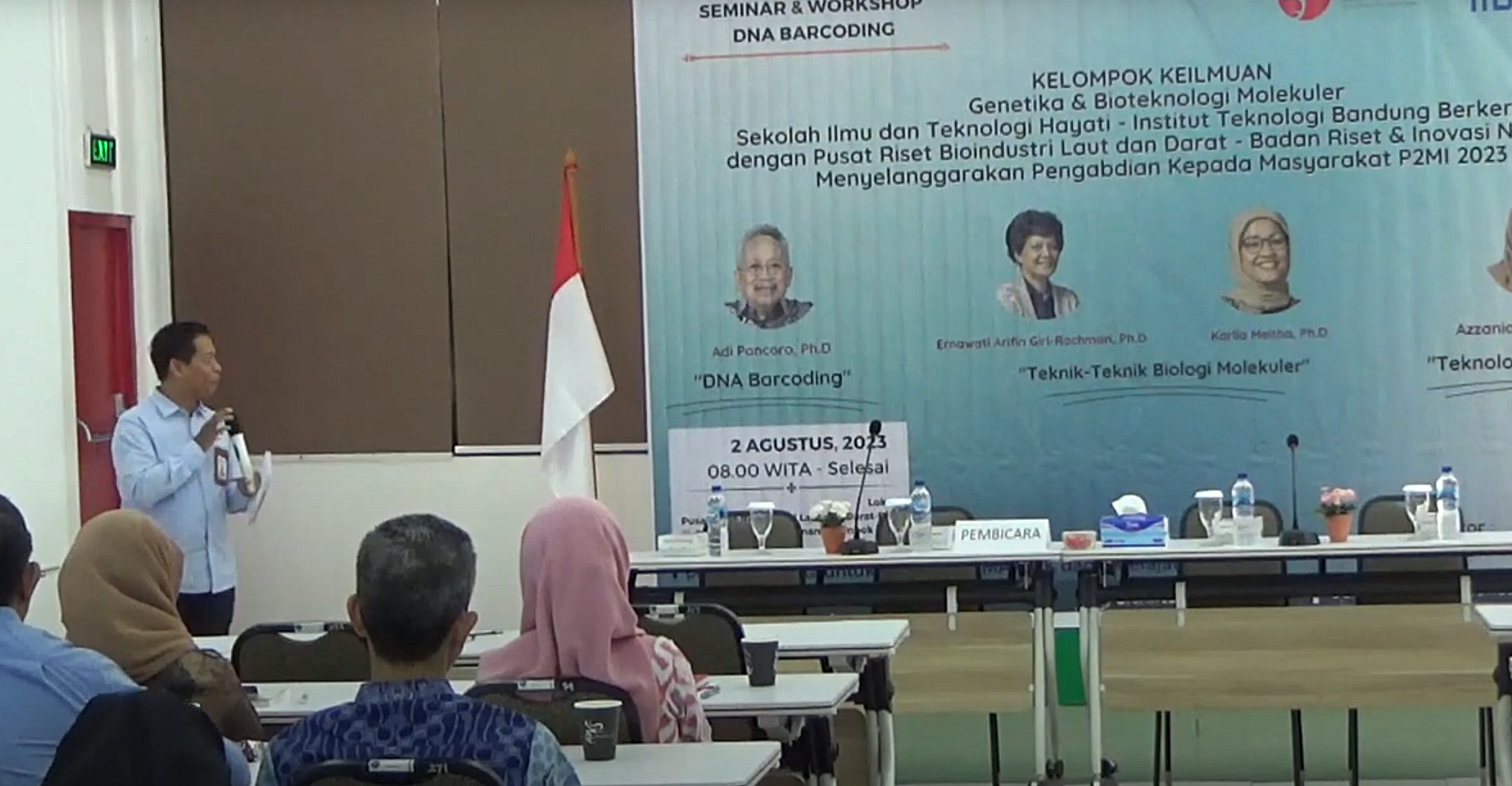

Dadang Sumardi
phylogenetics is described as the taxonomy classification of an organism based on the history of evolution, namely their phylogeogen and is an integral part of a systematic science that has the aim of determining the phyrogenic of organisms based on its characteristics. There are three methods in phylogenetic, namely: (1) Maximum Parsimony, (2) Distance and (3) Maximum Likehood which is generally used to form the best evolutionary tree or tree to observe sequence variations in groups. Each of these methods is used for different types of analysis and its use is adjusted to the shape and type of data to be processed. To facilitate the transfer of science in the development of biotechnology, especially in the molecular field, the ITB genetic scientific and biotechnology (GBM) group organizes workshop activities on the topic of molecular phylogenetic analysis and DNA barcode as activities of community service in community service research programs and innovations (GBM) P2MI) ITB 2023 . Seminar and Workshop activities were held in collaboration with the National Marine and Land Research Research Center for the National Research and Innovation Agency (PRBLD-Brin), North Lombok Regency on August 2, 2023. Participants in the activity of 40 people came from institutions in the Brin, Universities and Middle Schools. The material presented in the seminar and workshop activities includes 1) DNA Barcoding, 2) Molecular Biological Techniques and 3) Sequencing Technology. Seminar activities are equipped with a visit to the Brin PRBLD Laboratory to recognize laboratory activities and services. On laboratory visits, a research activity was also being carried out in collaboration with GBM KK with PRBLD Brin on the Potential Study of Lake Gilimeeno using molecular techniques, which is a series of P2MI KK GBM activities.
3. Establish cooperation with research institutions in Indonesia; 1. Sharing knowledge related to the concept of DNA Barcoding and the use of computer programs related to DNA Barcoding; 2. Conduct training in the field of molecular biology, including identification of bacteria using ITS2 and secondary structure and processing molecular data with bioinformatics methods.
1) Increasing knowledge and understanding of researchers, universities and high school teachers, especially in West Nusa Tenggara Province on molecular technology including DNA Barcoding, 2) Establishing a Cooperation of Research Partnership for Genetic Resources Development in West Nusa Tenggara